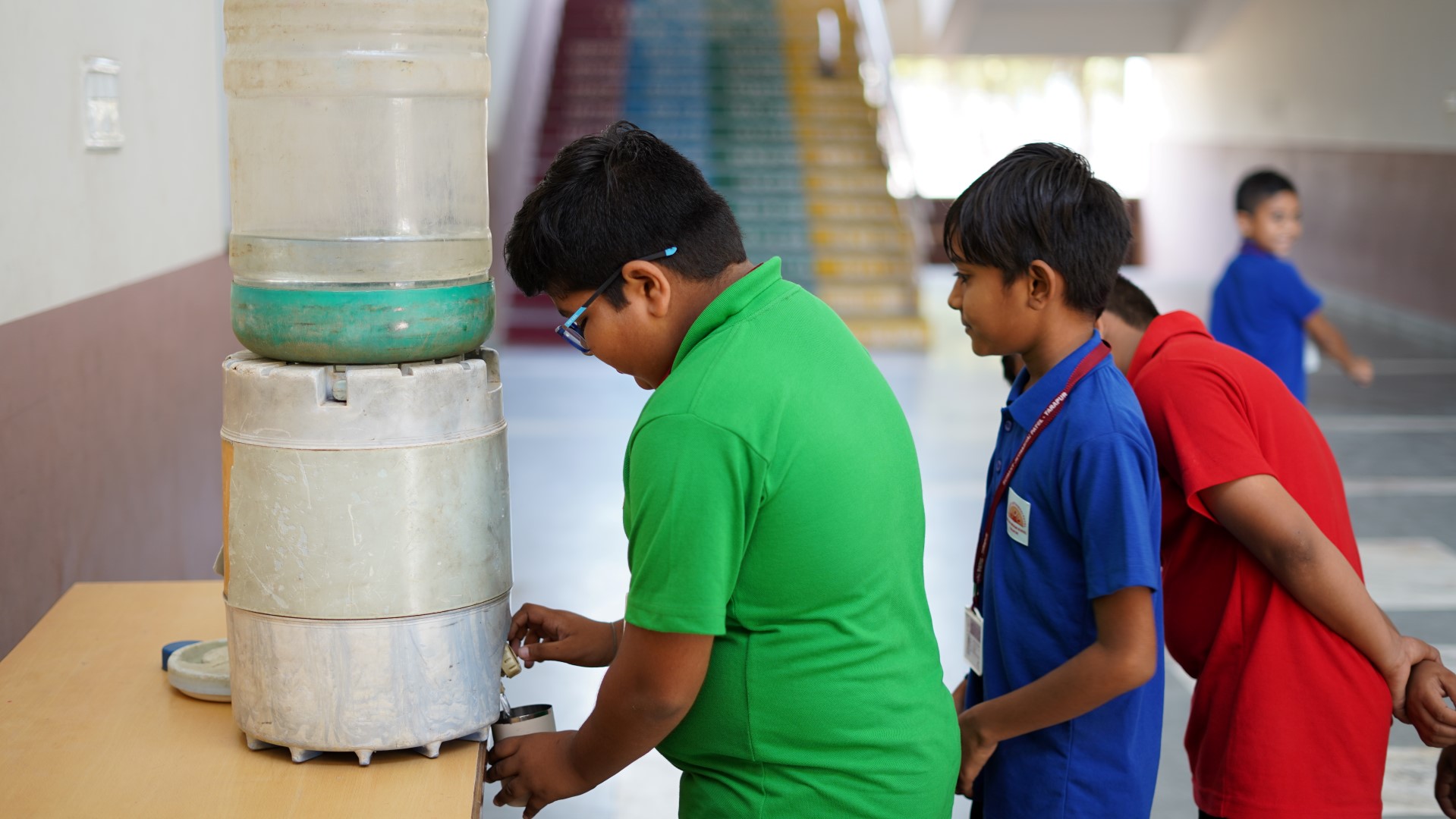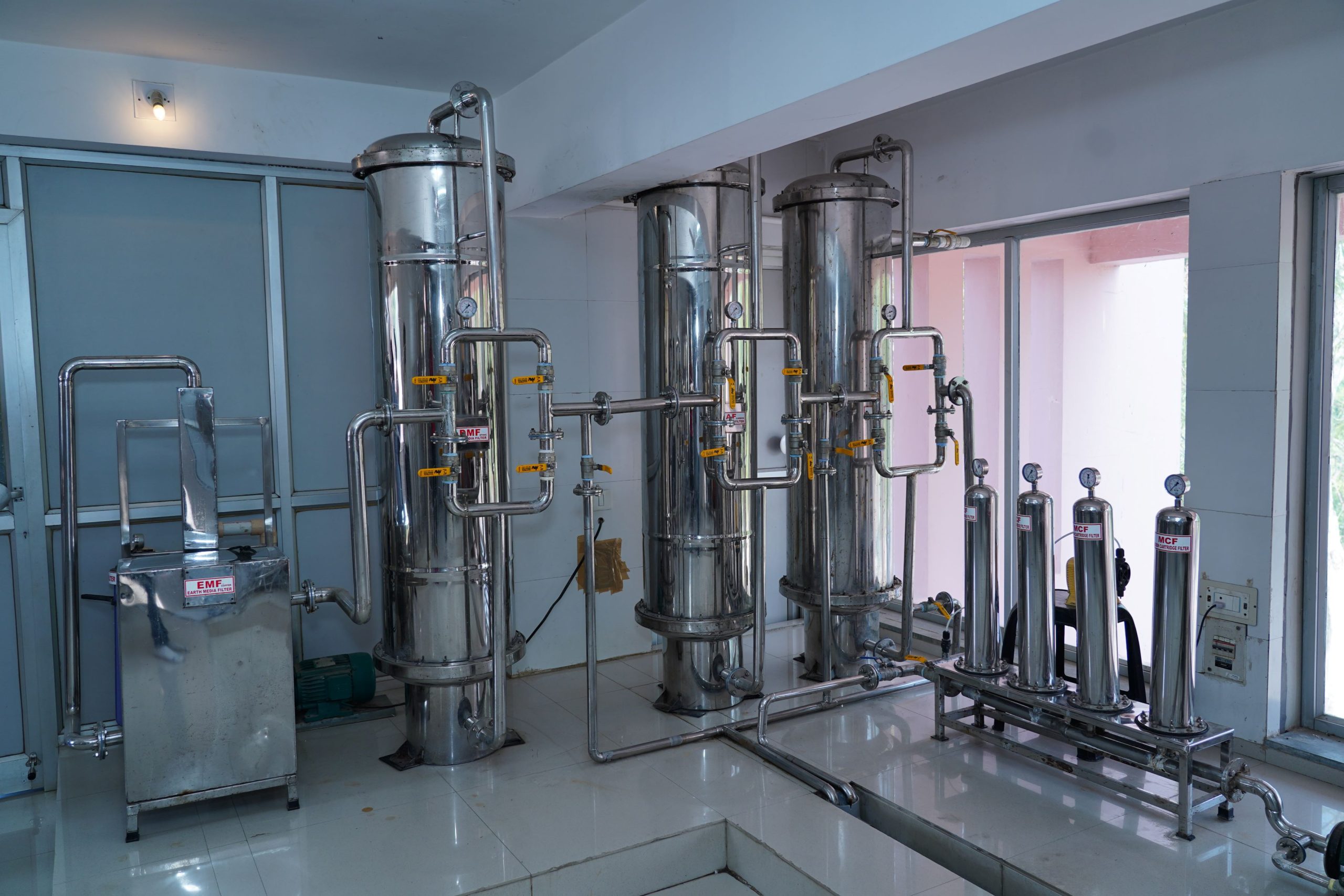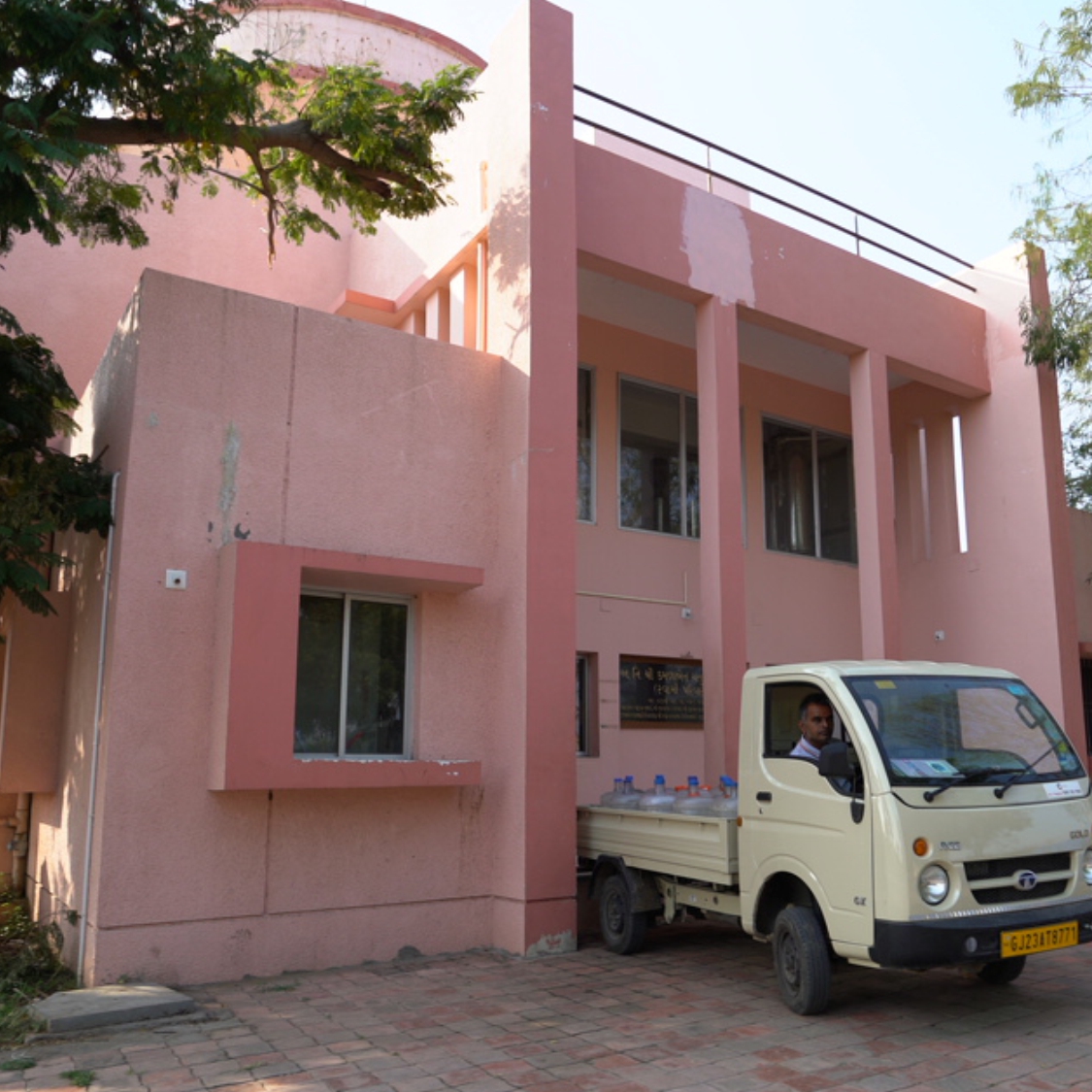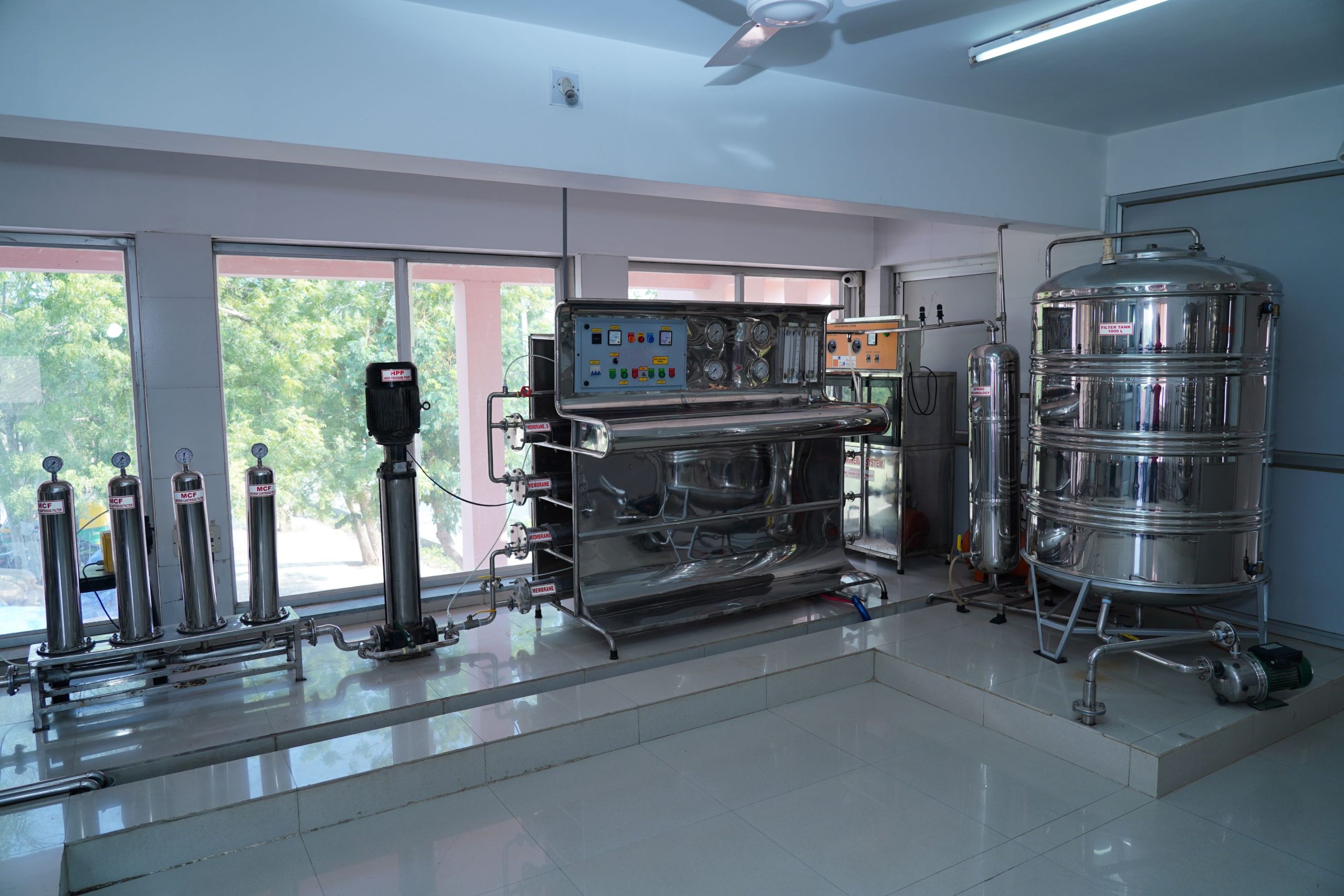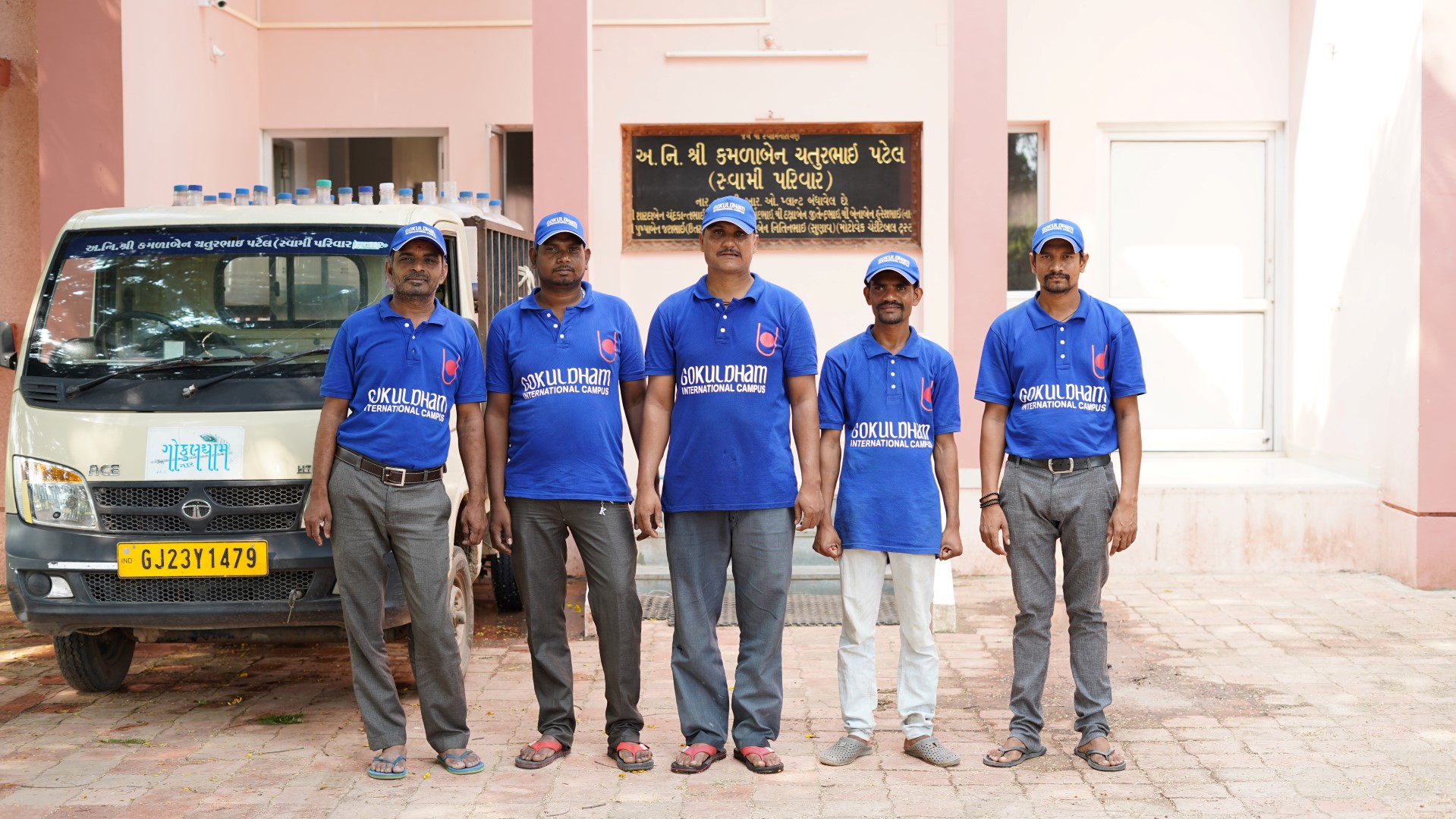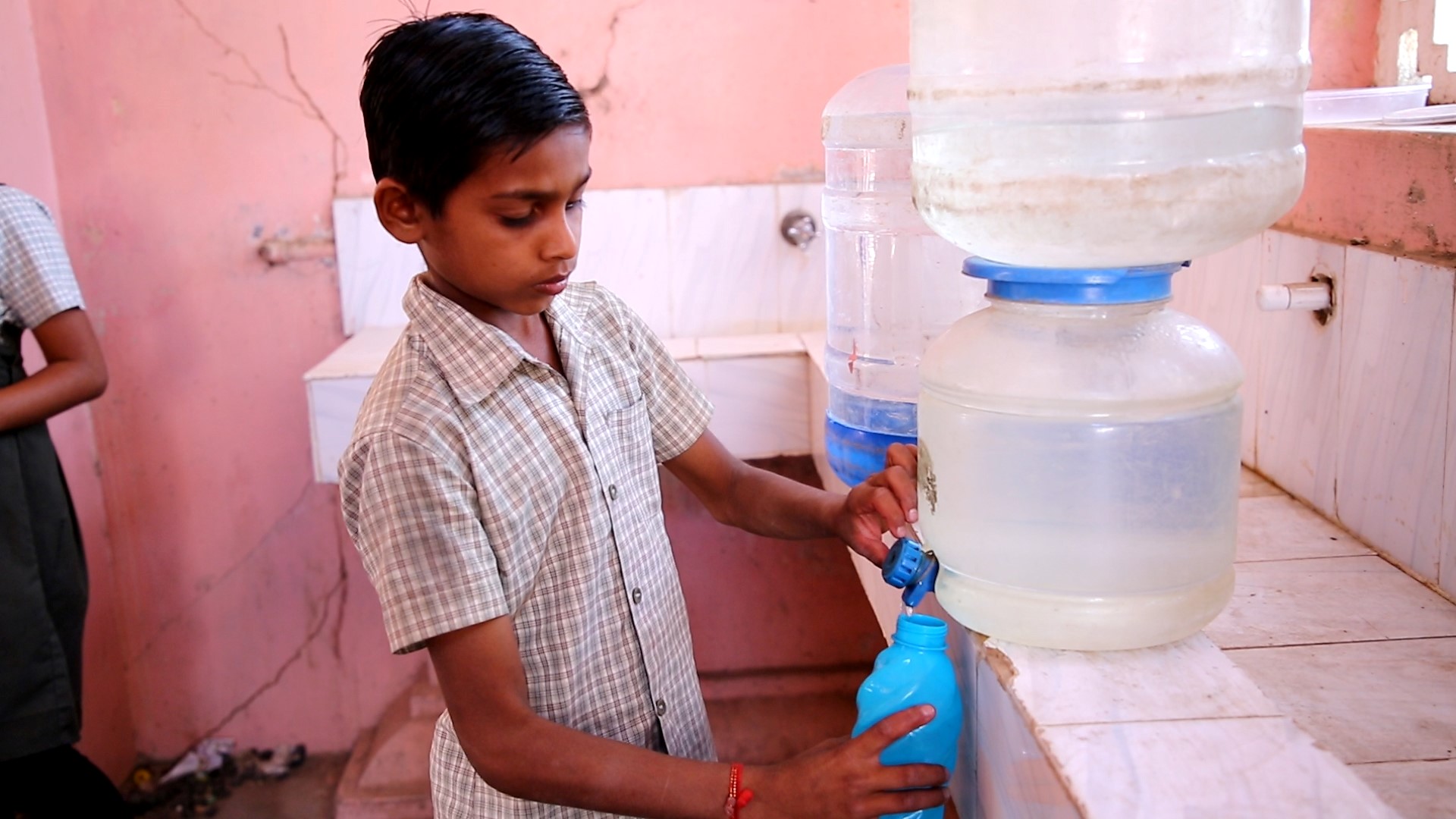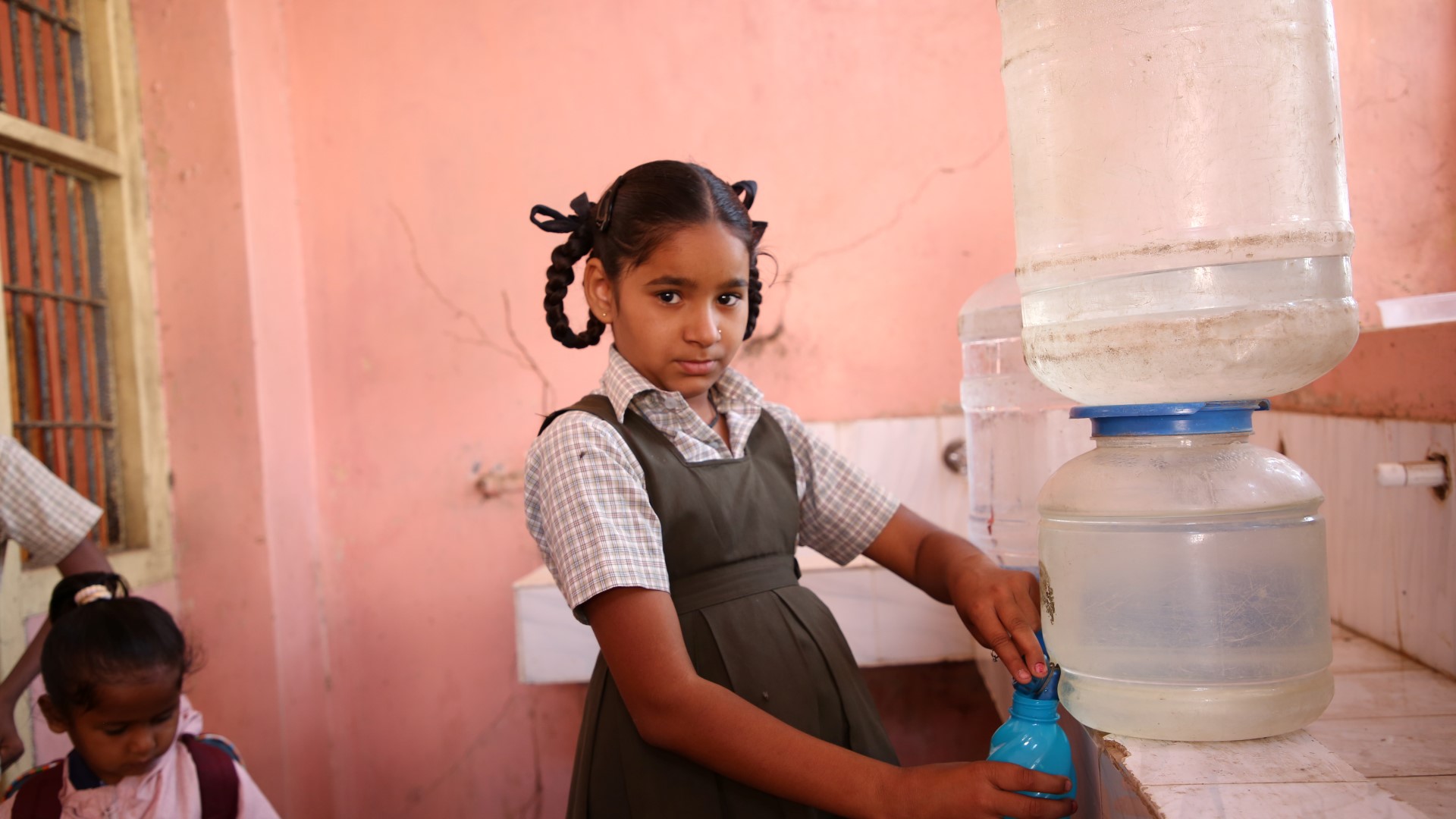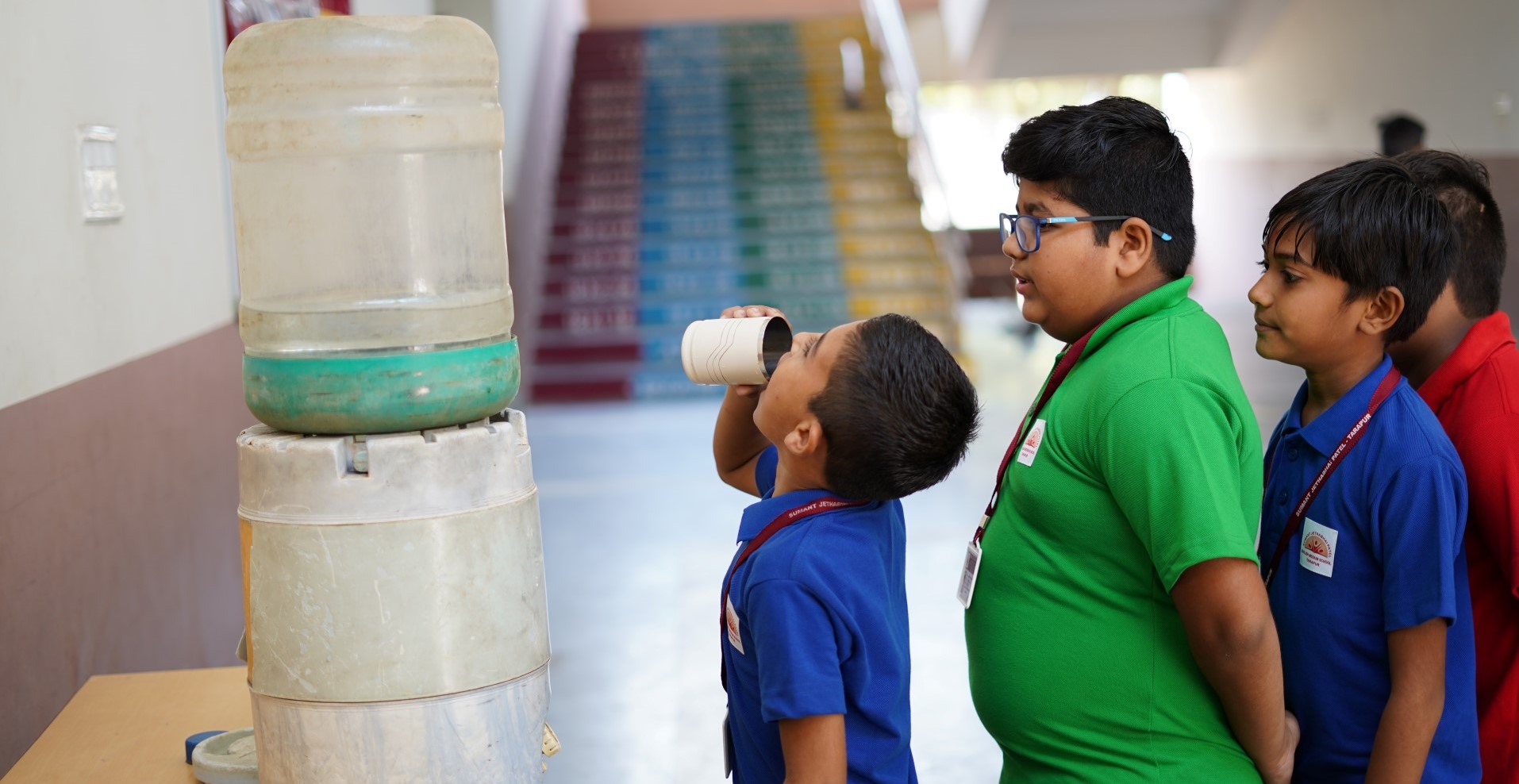Free Drinking Water to Government Schools
We provide clean drinking water to over 7,000 students daily in 22 schools
The water in the surrounding villages in Gokuldham Nar contains salt levels that are unfit for human consumption. The area reports a TDS count of 1,900 mg per litre, a measure that far exceeds levels considered safe. Our Gokuldham water treatment facility provides water with a TDS count of 160 mg per litre, a level that provides a balance between palatability and safety.
- TDS is a measure of the concentration of dissolved solids in water. These dissolved solids can have organic and inorganic matters, the main ones being magnesium, sodium and potassium and the anions carbonate, bicarbonate, chloride, sulphate and nitrate particularly from agricultural use.
- Whilst not all TDS are harmful to humans, having a little is actually common and makes water more palatable, it is necessary to address the levels to ensure the safety for human consumption.
About the Water Treatment Facility
The water treatment facility at Gokuldham Nar became operational in the year 2008 and is managed by nine staff with responsibility for maintenance of the equipment, delivery of the water to the surrounding villages and overall operations of the plant. The plant has a capacity to filter 2,000 litres of water per hour, and since its inception, the Campus has been supplied over 1.5 million litres of water to and over 7,000 students in 22 government schools and in seven villages. Water provided to schools and students is totally free of cost, with only a very low affordable charge made to those in surrounding villages. All the water supplied and the equipment is subject to strict quality control and maintenance processes daily.
About the Water Treatment Process at Gokuldham
The water treatment facility uses an industry recognised method of filtering and purifying water called reverse osmosis (“RO”), after being purified through four separate filter processes. The full process also includes the water going through a carbon filter and an ultraviolet (“UV”) light to eliminate any final micro-organisms that may still exist in the water after reverse osmosis. The water is ultimately pumped to a storage tank and ready for distribution and consumption. The modern facilities combined with trained staff at the water treatment plant ensures that the best drinking water is provided to students and all members of the community in surrounding villages.


